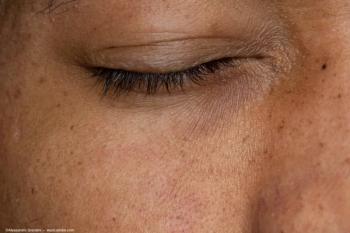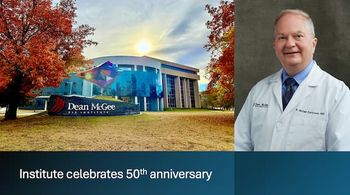
Q&A: Sevgi Gurkan, MD, on the PER-001 for glaucoma and DR
Key Takeaways
- Perfuse Therapeutics' implant targets vascular disease and ischemia, potentially restoring vision in glaucoma and diabetic retinopathy patients.
- The bio-erodible intravitreal implant allows for six-month drug delivery, reducing injection frequency and patient burden.
Perfuse Therapeutics is conducting trials for the treatment for glaucoma and diabetic retinopathy, aiming to restore vision and combat global blindness.
New therapeutics candidates continued to be researched around the globe as the field of ophthalmology works to reduce vision loss and blindness for all those affected by ocular conditions. One company who has recently shared data on their ongoing trials is Perfuse Therapeutics.
The company presented positive results at ARVO 2025 and
In our conversation, Sevgi Gurkan, MD, explained that the treatment targets the underlying vascular disease and ischemia in the retina, drawing from systemic vascular disease research.
Note: The following conversation has been lightly edited for clarity.
Ophthalmology Times: We saw that Perfuse Therapeutics announced positive results at ARVO 2025. Can you share some key takeaways from that ARVO presentation, and what was announced?
Sevgi Gurkan, MD: So let me step back and maybe give a big picture view of who Perfuse is a clinical stage ocular biotech pursuing a first-in-class endothelial antagonist in a bio-erodible intravitreal implant to be administered every 6 months targeting global causes of blindness, starting with glaucoma and diabetic retinopathy. We ran 2, phase 2 trials, randomized sham-controlled after a single administration of our PER-001 implant where we followed patients for 6 months. The topline results you heard from ARVO were the glaucoma results. More glaucoma data, as well as top line diabetic retinopathy data was shared the clinical trials summit on June 21 in Las Vegas.
The summary from ARVO is, first of all, we are very safe, well-tolerated, and only 2 drug-related adverse events of floaters, which were mild, intermittent, self-resolved. So excellent safety profile thus far, and the efficacy is much better than the anticipated. Because, for again background, we had set out to reduce the incidence of blindness, so reduce the disease progression rate. What we saw is restoration of vision.
I'll pause there, because that's amazing to us, and I believe it also is for the patients and the world in general. For background, Perfuse, as the name implies, intends to improve blood flow to the back of the eye. We are targeting the pathway that is known for decades for driving human vascular disease, and there are many approved products with this pathway in systemic vascular diseases, such as diabetes, cardiovascular disease, hypertension, kidney disease, and many drugs in development, in fact, targeting these indications.
As a nephrologist, so physician scientist by training, I serendipitously started a discovery role at Merck, when I started my industry career, where I looked at the eye as an extension of the systemic vascular diseases with even more similar and higher vulnerabilities to the systemic vessels, just given the physiology and the anatomy of the eye, specifically retina, which is the most metabolically demanding tissue In the entire human body. The vasculature in the retina is extremely tiny, so very vulnerable to systemic insults like high sugar, hypertension, high cholesterol, or heart disease. When I looked at the eye, I thought, okay, the mechanisms we know that work well for other vasculature in other tissues should really work for the eye too, because this tissue is specifically vulnerable for the same insults.
Of course, not surprisingly, all these target indications in fact the global cause of blindness also are seen in those patients that have these concurrent cardiovascular diseases. They go hand in hand. If somebody has glaucoma, they're at higher risk to have a systemic cardiovascular disease. If they have diabetic retinopathy, they're at high risk for systemic cardiovascular disease and renal diseases. Therefore the same physiology and patophysiology holds in the eye. We are bringing this known pathway of human vascular disease to the eye and targeting the fundamental underlying problem, which is both vascular disease and thereby the ischemia in the retina, with the hopes to prevent vision loss.
What we saw, fast forwarding to today, is, yes, we did improve blood flow, and not only it altered the progression of disease, it actually restored vision in patients, which really speaks to the fundamental role of both the perfusion as well as vascular disease in these global causes of blindness. That is really the key takeaway, a potential breakthrough therapy for global causes of blindness by targeting the underlying vascular disease and ischemia in retina.
OT: That is a noteble result and certainly very exciting for the entire ophthalmic community. You mentioned this as an intravitreal implant and was investigated for a six-month durability. Can you speak to why that might have led to some of these results, or how that particular drug delivery platform is used?
Gurkan: The mechanism is the driver of these results, meaning the delivery platform is solely a purpose, or a tool for delivering the drug. The reason for the delivery platform is that this is a small molecule, and like many other small molecules, it leaves the eye within hours if it's administered as is, without a delivery platform, just by the nature of our vascular system that gets rid of anything that's injected into the eye, within hours. That's going to be the fate of this drug without the platform. The platform allows slower release of a loaded implant itself the drug, thereby lasting a whole 6 months, so that we avoid injecting the patient multiple times, just to keep the drug concentration at the therapeutic range at all times.
The platform is the perfect tool to deliver small molecules and has been used by other small molecules in approved products such as Ozurdex. It's very well known for its safety and release kinetics and bioerosion profile in humans. We simply use the same platform, but of course, discovered a different iteration of it that's unique to our drug product, because for each drug substance, the platform has to be modified to match the kinetics of that drug substance, such as solubility, different pH conditions, and permeability. For our unique drug substance, we had to go through those modifications of the platform to achieve the release kinetics that allow the drug to last and sustain the exposures out to 6 months. Needless to say, this is a perfect, very commercially attractive profile, because the current standard of care requires a lot more frequent injections, which is burdensome, especially for the populations of interest, who are blind, who have a hard time coming to the clinic visits on their own. They obviously require someone else to drive them to and from and just the burden and risk of the injection procedure itself.
OT: Certainly, fewer visits is better for the patient and better for the care provider. It’s always very exciting to hear about these developments as the field continues down this path of more durable drugs and more you know, long term solutions. Can you talk a little bit about, related the glaucoma-specific trials, why glaucoma was chosen as the target, or if there are any surprising results from that trial?
Gurkan: Glaucoma was chosen because it's the leading cause of global blindness with no approved therapies. This is shocking to me, as a nephrologist coming into the space, that the global cause of blindness would have no approved therapies. I didn't know that starting this journey about, 10 years ago now. What is currently used is only targeting intraocular pressure reduction, whether be it eye drops or surgical interventions, and those are all approved to treat what we call ocular hypertension, and yet, half of the glaucoma patients have ocular hypertension. The rest is normal intraocular pressure. Yet, there's nothing for them, even those with high intraocular pressure. After controlling the intraocular pressure with these eye drops, as well as surgical procedures that are approved for ocular hypertension, not for glaucoma, patients continue to progress and lose vision. No wonder it's still the global cause of blindness in the world, the leading cause of blindness in the world. The unmet medical need was the number one reason.
Number two: It's not just the sustained release platform we offer. It's the first-in-class mechanism, which we bring from the systemic vascular disease know how to the eye, and that we knew both based on of our own evidence, the data we generated in clinical species, as well as multiple others in the academic world, in literature that generated that supports the mechanistic rationale of this pathway to treat all ocular indications. So, it's a first-in-class therapy for the leading cause of global blindness, where there are no approved therapies. But what's most exciting is not only, we have the opportunity to be the first approved therapy for global cause of blindness, but also that we are restoring vision. So, we will be the only and first disease modifying therapy in glaucoma, and we use our drug on top of the current standard of care. These results are evident despite patients being on stable background therapy, normal intraocular pressure, and yet still progressing. We selected those subjects that have evidence of progression despite adequate standard of care, and that's where we see restoration of vision.
OT: How many patients were part of this glaucoma trial?
Gurkan: The phase 2 trial included about 24 patients, around 8 per cohort, which is the low dose, high dose, and sham control.
OT: As we look forward, what are the plans for continued trials and research?
Gurkan: We are rapidly advancing to the pivotal enabling phase 2b trials later this year. We have ongoing CMC and GLP toxicology work to support the first patient, first visit to happen later this year, and we hope to expand beyond glaucoma and diabetic retinopathy into other indications as well that are currently not adequately treated, all the diseases that we believe have a vascular disease as the underlying pato-physiologic driver of vision loss. Those indications we have not disclosed publicly yet, but can see also some of it, the hints of which at our website. We are very excited to be advancing to multiple indications, which means this therapy could be a pipeline in a product blockbuster potential due to the huge unmet medical need.
OT: You mentioned that there will be further results at the Clinical Trials at the Summit meeting. Is there anything that you can share at this time?
Gurkan: This is also in the public domain. The diabetic retinopathy trial is very similar to the glaucoma. So that's the easy part, which is again, about 24 subjects, total, 8 per each. The same doses, low, high and sham have been tested. We enrolled moderate to severe, non-proliferative diabetic retinopathy subjects. You may know there are 2 currently approved therapies, only in the United States to treat these indications. Both are anti-VEGF mechanistically, and both of them were approved based on a structural endpoint called retinopathy severity score.
There are many shortcomings with both the current standard of care and this particular score, which I will try to summarize by saying that both the structure as well as function in diabetic retinopathy primarily focuses on the central retina today, which is what we know in public is in lay terms, is 20/20, vision. You know, when you can read the letters to the end, you have 20/20 vision. You are good. And that's primarily testing the central vision in the retina. So the central, right around your fovea, macula area. While peripheral vision, which is what the entire animal kingdom, depends on not only for their survival, but they also thrive on it, including humans, is completely ignored in the entire diabetic retinopathy landscape. In fact, to the point current treatments involve burning of that tissue with the hopes to preserving central vision. Preserve, not to improve ever, but to preserve. That is not being tested currently, obviously not treated, but to the other extreme, it's being burned just to preserve the central vision.
So, we enrolled patients and tested both peripheral vision and central vision, along with the structural outcome, where others have been approved in the US only, but we hope to be not only, again, the disease modifying therapy for DR by going after the underlying vascular disease and ischemia, but a therapy that can improve vision, and not just central or peripheral, but vision as a whole, in this indication that no other therapy was able to show.
OT: Are there any trials happening for this outside of the US right now with that global push, or not yet?
Gurkan: Not yet. The second larger phase 2b the pivotal enabling studies haven't started yet, and we haven't decided yet whether there will be sites outside of the US for those. We are actually a very small company, 9 full time employees, to be specific, all of whom are listed at our website. We are in the process of finalizing those details and plans. On that note, we are also open to partnering at the right time with the right partner, preferably global partner, that could bring these therapies globally as rapidly as possible to all indications under interest.
Newsletter
Don’t miss out—get Ophthalmology Times updates on the latest clinical advancements and expert interviews, straight to your inbox.


















































.png)


